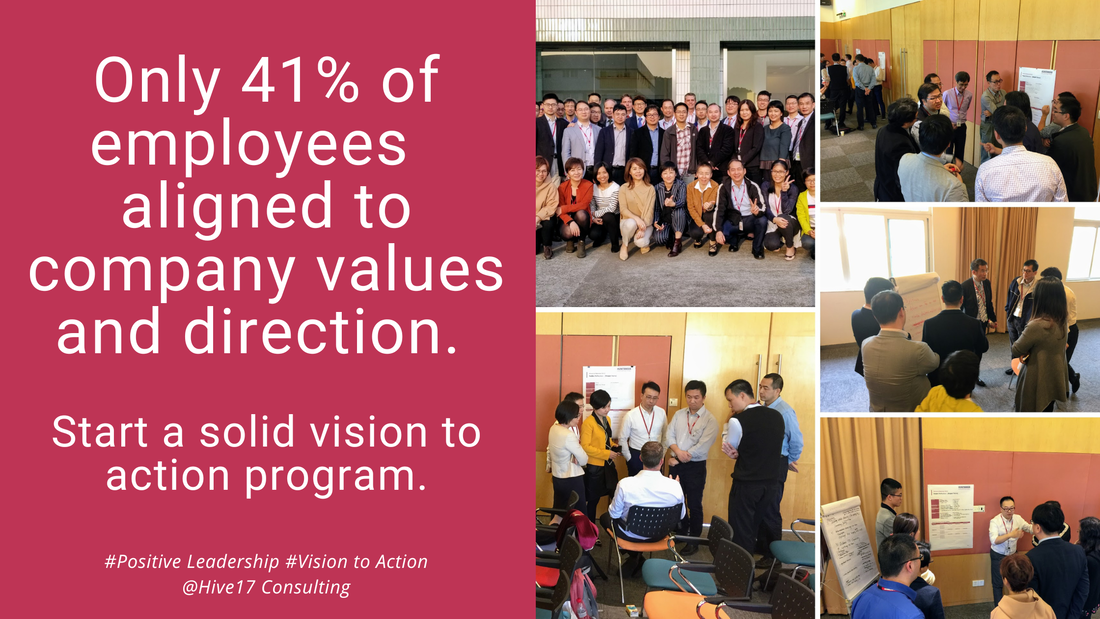|
The purpose of any organisation is to successfully deliver value to their customers. The range of customers might be wide and the definition of value and success might greatly vary. Though, in essence that is it. And rightfully, companies are focusing their efforts on selling, producing and delivering their products and solutions.
Recently, there have been new questions and barriers appearing in leadership circles. "I need all my employees to focus in one direction."; "It feels like that internal silos are preventing us from delivering to our clients."; "We need values and a culture that is exciting to work in." All these statements point to a need for increased focus on the delivery of that customer value. We need an effective foundation for our way of working. That is basically the infrastructure to run our operations; or the Human Operating System. The goal of the human operating system is to create an environment that enables teams to give their best. It is about alignment, transparency, change management, motivation, psychological safety and fun. Imagine a flotilla of small boats that independently sail towards a common direction. How these are operated and are connected describes this operating system. Here are some of the key components for this human operating system:
Let's arrange a meeting to find out how Hive17 Consulting can further improve your way of working!
0 Comments
This week we had another great Sustainability event in Singapore - organised by Lufthansa Group. While the airline industry overall is struggling to curb carbon emissions, it is great to see that one important player is striving forward on their sustainability journey. Maybe the most prominent technology is AeroShark - a nature-inspired film that is reducing the friction and drag of a plane's fuselage.
The event brought together industry experts into different panels that discussed sustainability also beyond the airline industry. For a while now, I have been pondering about key words that describe sustainability journeys. During this event, I have put more thought into these descriptors which guide us on a solid path towards a better planet and society. Honesty - past incidents of greenwashing have shown that solid reporting is essential in order to gather internal and external support for the ESG journey. We need to create more transparency and credibility, so that we can strengthen our reputation towards consumers, regulators and talents. Lufthansa has illustrated their effort and dedication to report on a long list of standards. Frugality - frugality means the careful use of resources and this is strongly related to reducing our consumption of energy, raw materials and natural landscapes. Operational efficiency is not only a driver to reduce cost, in most cases these solutions also have a net positive effect on the environment. The AeroShark film, better transport routing and switching to more efficient drive trains are some great examples. Courage - risk is a large driver in corporate decision making and often, this is holding back crucial investment decisions. Bold new strategies into an uncertain future requires courage - and we need environments that are enabling more risk taking. One great example was Jungheinrich where the board decided five years ago to fully embark on their sustainability journey; this courage has paid off very well for them. Synergy - sustainability journeys demand stronger collaboration between the silos within an organisation and beyond their company borders. This collaboration is facilitated with common goals and a belief that together we can achieve more. It was also highlighted that academia and industry need to work much closer and share insights. Together we are stronger. The journey towards a greener and fairer planet can be daunting. These four underlying principles can act as a guide towards more successful sustainability transformations. Which drivers do you suggest to add? When talking about sustainability, there are a few important terms that come to my mind: honesty, courage, frugality, etc. Today, I want to talk about courage.
The former Unilever CEO Paul Polman shared a number of insights in this interview and I want to highlight two quotes which are well linked together:
Basically, we need to shift our mindset to "win-win" - currently we are stuck in win-loose. This new attitude means the planet wins, our global community wins, and we as companies win. In order to achieve this, our operations and products need to become restorative, reparative and regenerative. This is what we as net positive leaders are required to do. What is the biggest barrier? It is not technology, finances or capabilities. The biggest barrier is courage. What are Paul's suggestions?
Yes, this sounds huge; it is huge. Still, the best time to make your first step in this direction is today. One step at the time. What is your first step? Source: Former Unilever CEO Paul Polman Says Aiming for Sustainability Isn’t Good Enough—The Goal Is Much Higher, Harvard Business Review, November 2019 Our current times are full of change and a solid strategy is necessary to give the organisation direction and alignment to create lasting success. Furthermore, a meaningful and clear vision is driving motivation and is a strong ingredient for making decisions. Yet, many companies struggle to bring their vision to the ground. Employees are saturated with changing strategies and often don't see how the new directions are impacting their daily work.
"Only 41% believe current employee behaviours are mostly aligned to company values and direction." - 26th Annual Global CEO Survey - Asia Pacific | PwC | January 2023 (link) Often, new strategies come with flashy posters, inspiring townhalls and a set of top-down KPIs. And then the rest of the organisation is left to create success. And in 59% of the cases, it doesn't happen. We need to go beyond that. How can we best engage to translate vision into action? In my experience, there are three key areas:
In the process of setting and propagating targets, it is also important that we provide the wider context and that this is a collaborative bottom-up process. Let the people define their own targets and how to review them. As a leader, your role is to provide guidance and support. At Hive17 Consulting, we have been running 'Vision to Action' workshops for over six years with great success. They are establishing an environment where target setting and reviews are building strong alignment, direction and motivation. |
Subscribe
Receive our monthly themed summaries of our thoughts: click! TimTim is a change practitioner in the area of innovation and excellence. He is working with teams to accelerate innovation, collaboration and agility. Categories
All
Archives
July 2024
|





 RSS Feed
RSS Feed